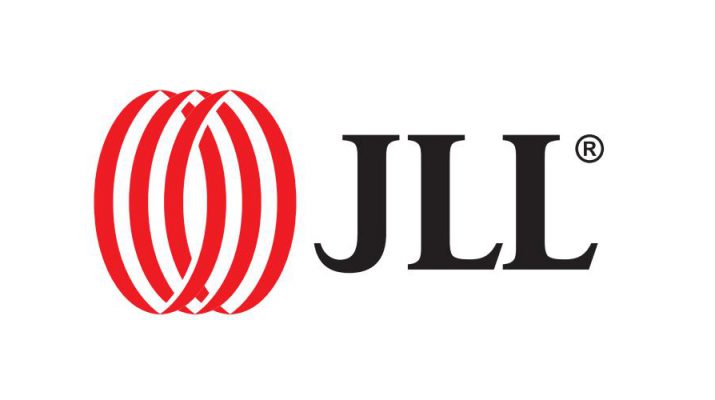Chennai’s residential real estate market witnessed an eightfold increase in new launches, from 182 units in Q2 2020 to 1,487 units in Q3 2020, according to JLL Research. New launches increased after a gradual relaxation of lockdown restrictions. The Western Suburbs (Porur, Ambattur & Padi) accounted for nearly 80% of the new launches during the quarter. With homebuyers showing an increased preference for gated communities during the health crisis, most of these new launches were directed towards capturing that demand.
- Western Suburban submarket accounted for nearly 80% of the new launches
- Homebuyers show an increased preference for gated communities
- There has been a marginal decline in unsold inventory as sales outpaced new launches
- A total of 1,570 units sold in Q3 2020, a 241 % growth over Q2 2020
Residential real estate witnessed pent up demand translating into sales and 1,570 units were sold during Q3 2020. Sales was concentrated in the Southern (Padur, Navalur, Perumbakkam & Kilkattalai) and Western Suburbs which contributed over 80% to the quarter. Maximum sales traction was witnessed in the affordable and lower-mid segments. Subsequently, enquiries for larger sized homes from a certain section of prospective buyers also increased as preferences shifted towards homes with more open spaces and study rooms.
| Q2 2020 | Q3 2020 | Growth (%) – Q3 2020 over Q2 2020 | |
| Launches (units) | 182 | 1,487 | 717% |
| Sales (units) | 460 | 1,570 | 241% |
| Average Prices (INR/sq ft) | 4,585 | 4,585 | – |
Source: Real Estate Intelligence Service (JLL), 2020, JLL Research
“There has been a marginal decline in unsold inventory during the quarter as sales outpaced new launches. While quoted residential prices remained stagnant, developers are offering various financial schemes, low booking amounts and other freebies to attract home buyers.” said Siva Krishnan, Managing Director, Chennai, JLL India.
Residential market on road to recovery with strong sales
India’s residential market was more active in Q3 2020 with sales increasing by 34% versus Q2 2020. Mumbai accounted for 29% of the total sales in the quarter, while 22% of sales was contributed by Delhi NCR. Growth in sales activity was also driven by stronger demand in Chennai, Hyderabad and Pune. Residential market activity is also being supported by renewed interest from NRIs in Q3 2020, resulting in more pent up demand in the market and increased enquiries received by developers.
Sales volumes increased across markets
| Q2 2020 (in units) | Q3 2020 (in units) | Growth (%) – Q3 2020 over Q2 2020 | |
| Bengaluru | 1,977 | 1,742 | -12% |
| Chennai | 460 | 1,570 | 241% |
| Delhi NCR | 2,250 | 3,112 | 38% |
| Hyderabad | 1,207 | 2,122 | 76% |
| Kolkata | 481 | 390 | -19% |
| Mumbai | 3,527 | 4,135 | 17% |
| Pune | 851 | 1,344 | 58% |
| Total | 10,753 | 14,415 | 34% |
Mumbai includes Mumbai city, Mumbai suburbs, Thane city and Navi Mumbai
Source: Real Estate Intelligence Service (REIS), JLL Research
“The further easing of lockdown restrictions and the upcoming festive season might help in bringing buyers back to the market. An assessment of years to sell reveals that the expected time to liquidate stock has increased from 3.6 years in Q2 2020 to 4 years in Q3 2020. While the residential space remains unpredictable, favourable supply dynamics could deliver potential upside for both homebuyers and developers in the medium-term,” said, Dr. Samantak Das, Chief Economist and Head of Research & REIS, India, JLL.
Focus on mid and affordable segment continues
New launches were restricted with 12,654 units launched in the third quarter, a decline of 14% quarter-on-quarter. Developers focused on completion of under construction projects and clearing their existing inventory. Hyderabad and Mumbai accounted for over 60% of the total new launches in the quarter. The drop in new launches was driven by Bengaluru, which witnessed a substantial decline of over 80% as compared to Q2 2020. Development focus on mid and affordable segments continued in Q3 2020 with nearly 75% of the new launches in the sub INR 1 crore category. Moving ahead, the focus on these price segments is expected to continue with developers focussing to reap the benefits of strong pent up demand.
| Q2 2020 (in units) | Q3 2020 (in units) | Growth (%) – Q3 2020 over Q2 2020 | |
| Bengaluru | 6,135 | 1,074 | -82% |
| Chennai | 182 | 1,487 | 717% |
| Delhi NCR | Negligible | 699 | – |
| Hyderabad | 5,034 | 5,396 | 7% |
| Kolkata | Negligible | Negligible | – |
| Mumbai | 2,294 | 2,242 | -2% |
| Pune | 1,135 | 1,756 | 55% |
| Total | 14,780 | 12,654 | -14% |
Mumbai includes Mumbai city, Mumbai suburbs, Thane city and Navi Mumbai
Source: Real Estate Intelligence Service (REIS), JLL Research
Unsold inventory dips across the country
Q3 2020 witnessed sales outpacing new launches as unsold inventory across the seven markets (Mumbai, Delhi NCR, Bengaluru, Hyderabad, Chennai, Pune and Kolkata ) decreased marginally from 459,378 to 457,427 units. Mumbai and Delhi NCR together account for more than 50% of the unsold stock which are at various stages of construction.
| Q2 2020 (in units) | Q3 2020 (in units) | Growth (%) – Q3 2020 over Q2 2020 | |
| Aggregate (7 cities) | 459,378 | 457,427 | -0.4% |
Top 7 cities include Delhi NCR, Mumbai, Bengaluru, Chennai, Hyderabad, Pune and Kolkata
Mumbai includes Mumbai city, Mumbai suburbs, Thane city and Navi Mumbai
Source: Real Estate Intelligence Service (REIS), JLL Research
Over the last few years, residential prices in most markets have remained stagnant. Developers have been operating with low margins and the chances of a significant reduction in prices is unlikely. In Q3 2020, prices remained largely stable across all the seven markets when compared to the previous quarter. However, it is important to note that developers in certain markets are providing moderate price discounts to kickstart sales, thereby facilitating cash flows to tide over the crisis in the short term. Moreover, developers are offering flexible payment schemes such as no EMIs for a year and other schemes to attract prospective homebuyers who pressed ‘pause’ in the last few months. This could be the first signs of a broader recovery of the residential market in the country.
NOTE: *The comparison pertains to only last two quarters since the current crisis has no parallel and has infused uncertainty which we have not witnessed in the past decades.




